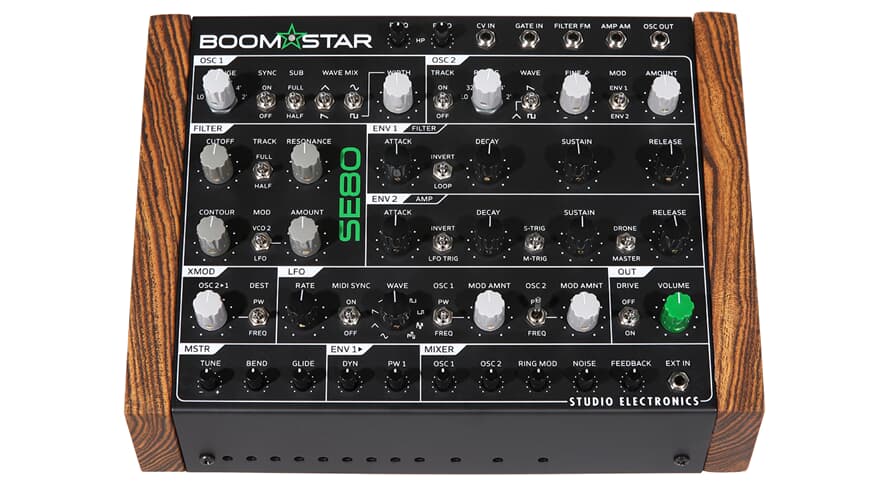
Studio Electronics Boomstar SE80
Boomstar is a return to the raw power and purity of non-programmable discrete analog, where STUDIO ELECTRONICS started in 1985 with the Midimoog. The snap and punch of hardware envelopes drive the Boomstar's brilliant discrete voltage controlled circuits with unparalleled sonic integrity and versatility; refaced, and revoiced for 2018, the Boomstar MKII is likely the ultimate desktop analog synthesizer for those who remember, and desire still, analog synth sounds that changed the music, and sound seekers who have yet to discover that electric magic and delight in their time—via MIDI or CV of course. The Boomstar's alchemy of combinable waveform oscillations—with sub, OSC1-OSC2 sync—filter and oscillator xmod, ring mod, 5 revered filter types, extensive modulation routing made easy via its 18+ toggle switches, and a flexible software LFO, make sound and music design a daring delight. Hardware envelopes with invert, loop, drone and master mode deliver that flexible, funky snap and shift.
The quick-turn shaft pots along the bottom for the hardware ring mod, noise, feedback: now diode-based for more complex and interesting harmonic distortion, and VCO Levels make vital sonic changes intimate, immediate, and indispensable; the adjacent overdrive switch adds beefy boost, warmth, and edge. 29+ pots insure a fluid, intuitive groove over wide-ranging sweeps, and subtle tone variations: whip them suddenly and rhythmically into shape, or feather in the changes. Expect cleaner levels in and out of the 6 MKII filter models for 2018 (MKIIs will still brown out but their headroom is more generous): 3003—rubbery, squelchy, twangy, lo-fi, beloved Roland® TB-303 (not pictured), 4072—powerfully resonant, thumpy and mid-rangy ARP® 2600; 5089—classic, buttery & boomy Moog® 24dB ladder; 8106—ripping Jupiter-Juno Roland® magic; SEM—the original Lord Tom Oberheim® 2-pole 12dB/octave, boxy, reedy & boomy gem; SE80—the legendary, creamy, dreamy, multi-mode Yamaha® CS-80. So why not go off-synth via the external input processing patch point: connect rhythm and color to non-native oscillations and pulses, moving in, around, and through them?




